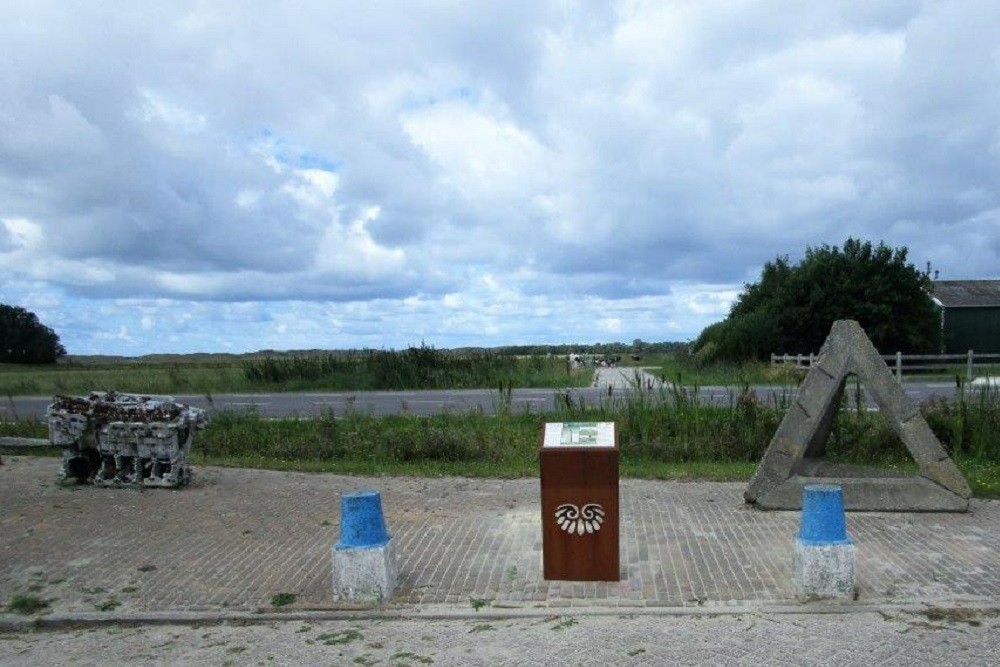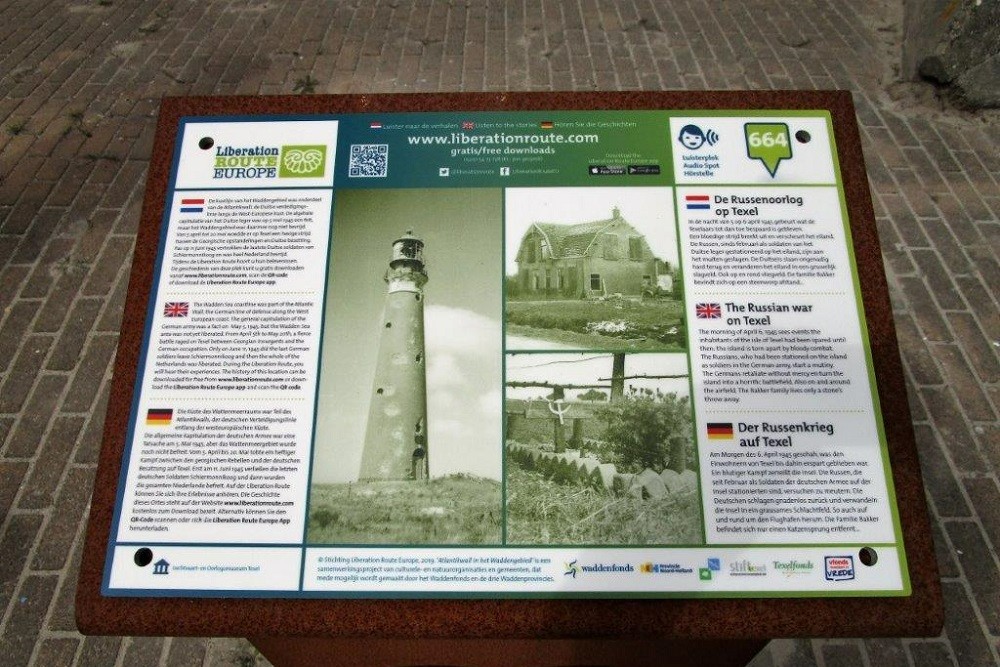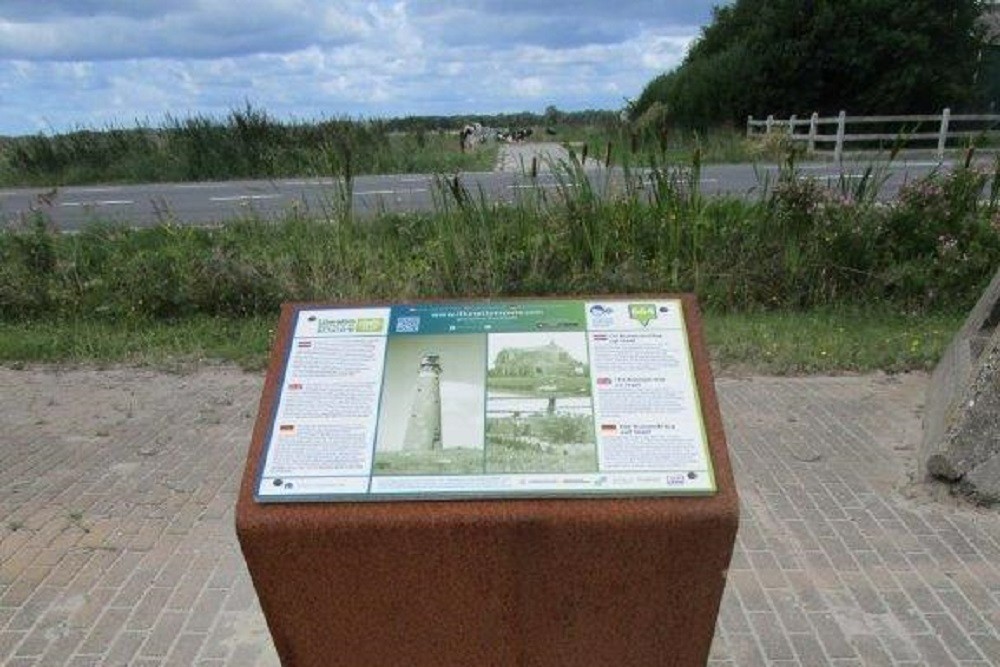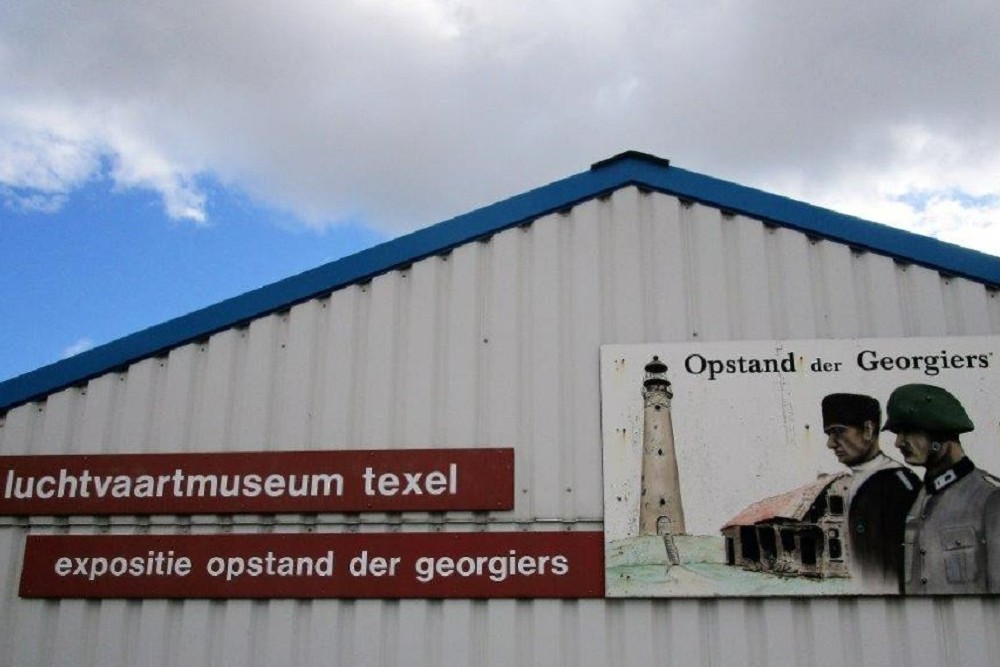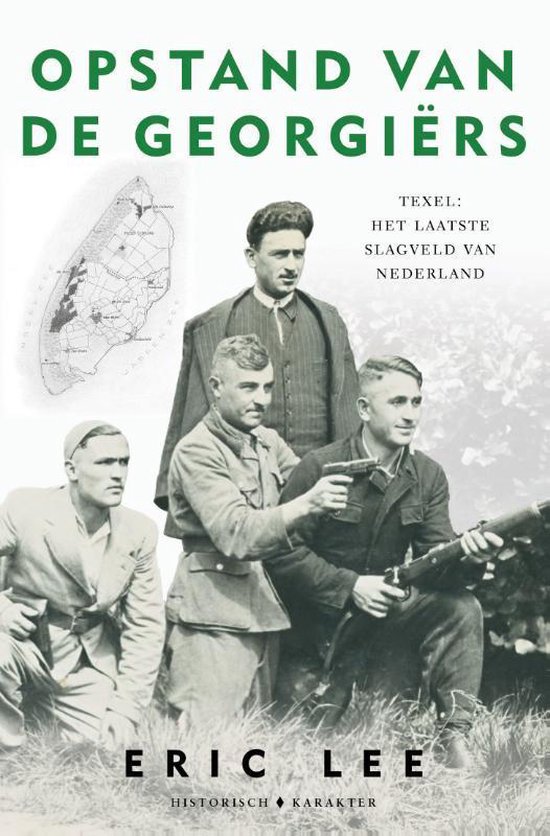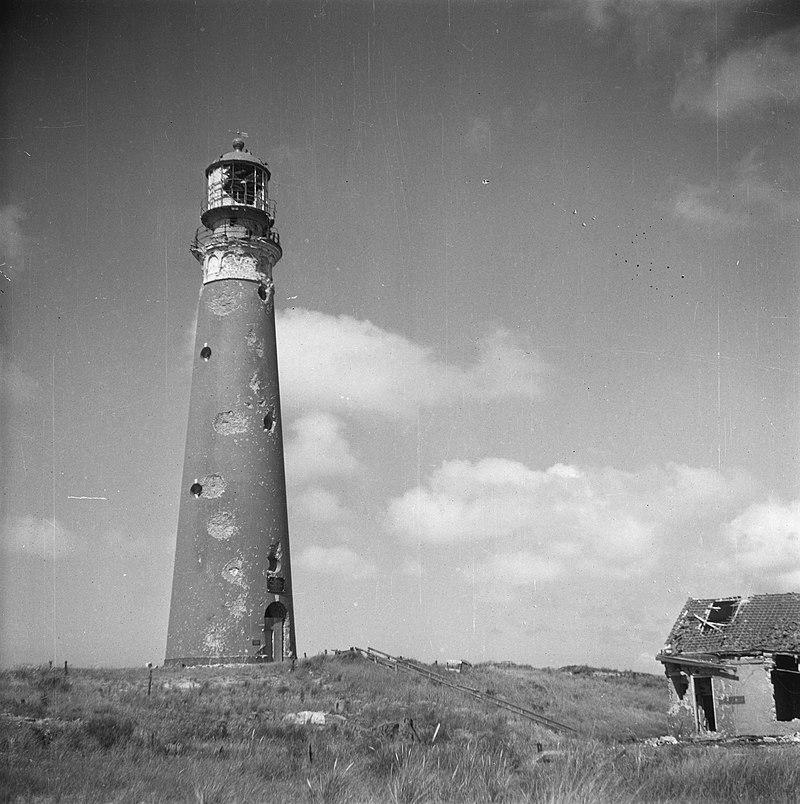Liberation Route Marker 664: The Russian war on Texel
The Russian war on Texel
The Second World War drew to an end in April 1945. The German troops surrendered in only a matter of days. Nevertheless, the last battle on Dutch soil was yet to come. Texel became the battleground of the Georgian Uprising. There was a lot of fighting at and around Vlijt airport. The Bakker family lived a stone's throw away and suffered the consequences.
The Fliegerhorst Gefechtsstand Bunker Texel (St.P.IXb L.), located on the Postweg was part of a complex of bunkers, built for the German troops who were engaged in the construction and surveillance of the airfield. A runway was constructed, new industrial buildings were erected, and hangars were built. The Fliegerhorst Gefechtsstand bunker was camouflaged as if it were a farm. Three windows were painted on the north-eastern façade (entrance). It had a roof, an extra outside wall and there was a wooden horse on the south side. Halfway through the war, the Germans decided, as a precaution, to close down the airports along the coast to prevent Allied airborne landings.
On 26 May 1944, the staff of the 803. Nordkaucasian Infanterie Batillon took up residence here—78 soldiers, 18 non-commissioned officers and five officers. To defend the complex, they had a heavy Russian machine gun and a smaller machine gun at their disposal. The De Halm, Kema, Korenschoof, Ruimzicht, Maurik, Vruchtbaar Oord, Gizela, Padang, Vooruitgang, Gend, Oud Breda en Zevenbergen farms were located around the airport. A little further north along the Postweg was the Bland and Berg farm. The family Bakker lived on the Nieuw Breda farm, right next to the airport. Abraham Bakker, Trijntje List, daughter Jetty (1927-2019) and sonAlbert (1930-2012).They worked for the resistance.
On 6 February 1945, the 822nd Georgian battalion was stationed on Texel, consisting of approximately 800 volunteer Georgians and 400 German soldiers. On 6 April 1945, the Georgians revolted against the Germans. Initially, the uprising went smoothly, but attempts by the Georgians to conquer the two German batteries in the south failed. The uprising of the Georgians cost the lives of 120 men from Texel, at least 565 Georgians, and approximately 800 Germans. The number of Germans injured and killed is unclear. Estimates range from 420 to 2347. The material damage was also considerable, with dozens of farms on texel going up in flames, particularly in the Eierlandse polder.
Audiospot - The Russian war on Texel
Liberation Route Europe is a certified Cultural Route of the Council of Europe. With hundreds of sites and stories in nine European countries, the route links the main regions along the advance of the Allied Forces in 1943-1945.
The entire route consists of themed routes that can be travelled by by hiking, walking, cycling and car. These routes pass numerous historical and interesting sites and tell stories from a multitude of perspectives that were important in the final phase of World War II.
Many routes feature listening spots, offering the opportunity to listen to a historical story at a location. In addition, many ‘Vectors of Memory’ have been placed, indicating that the passer-by is on one of the Liberation Routes.
The routes can be found on the Liberation Route Europe website or in the app through which many stories can also be listened to.
Do you have more information about this location? Inform us!
Source
- Text: TracesOfWar & Liberation Route Europe
- Photos: Arie van Wijngaarden
- LEE, E., Opstand van de Georgiërs op Texel, Karakter, Uithoorn, 2020.
- POOL, J., Stamppot met kogels, Lemniscaat, 2022.
Related books
Nearby
Museum
- Bunker de Vlijt - Texel
- Aviation and War Museum Texel - De Cocksdorp, Texel
- Juttersmuseum Texel - Oudeschild, Texel
Monument
- Remembrance Tree Deportation Residents of Texel - De Cocksdorp, Texel
- Tree of Life Texel - Den Burg, Texel
- War Memorial Texel - Den Burg, Texel
Cemetery
- Commonwealth War Graves General Cemetery Den Burg - Den Burg, Texel
- Georgian War Cemetery (Loladse) - Oudeschild, Texel
Fortification
- Fliegerhorst Gefechtsstand Bunker Texel - Zuid-Eierland, Texel
- WN 21 H - Regelbau 617 Bunker Texla - Den Burg, Texel
- WN 21 H - FA Pferdestall - Den Burg, Texel
